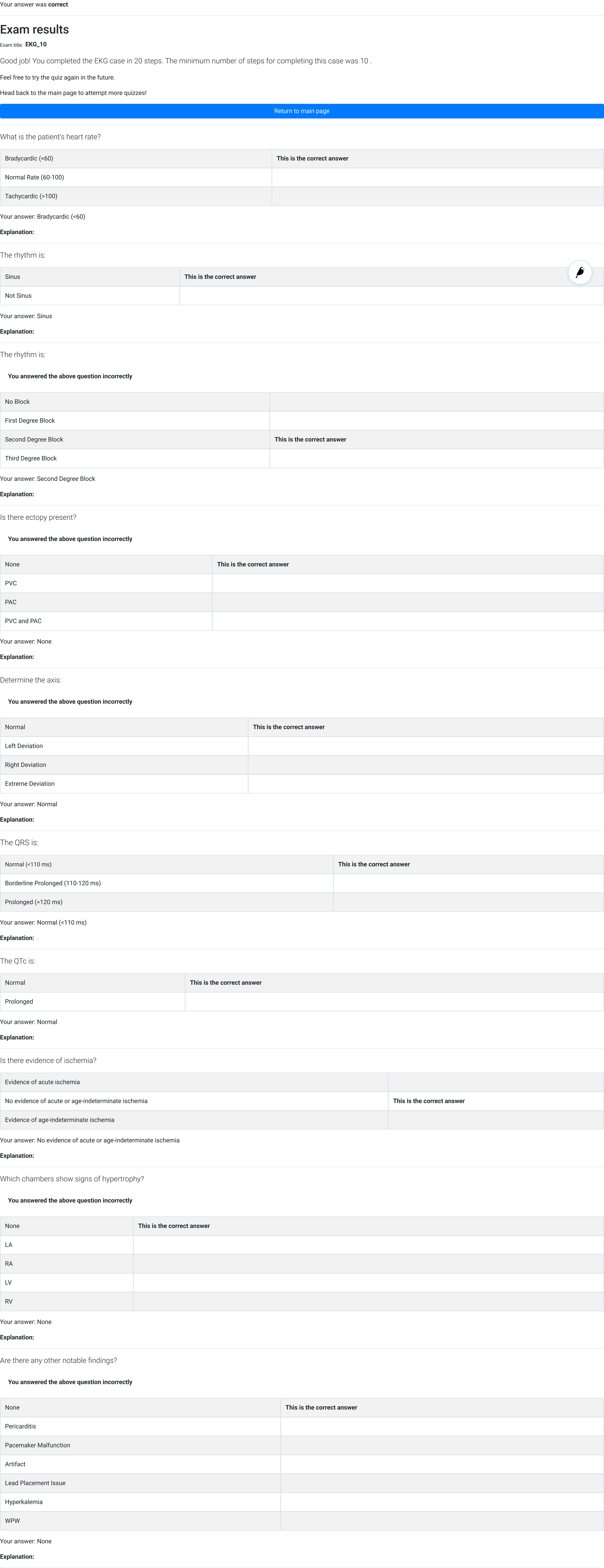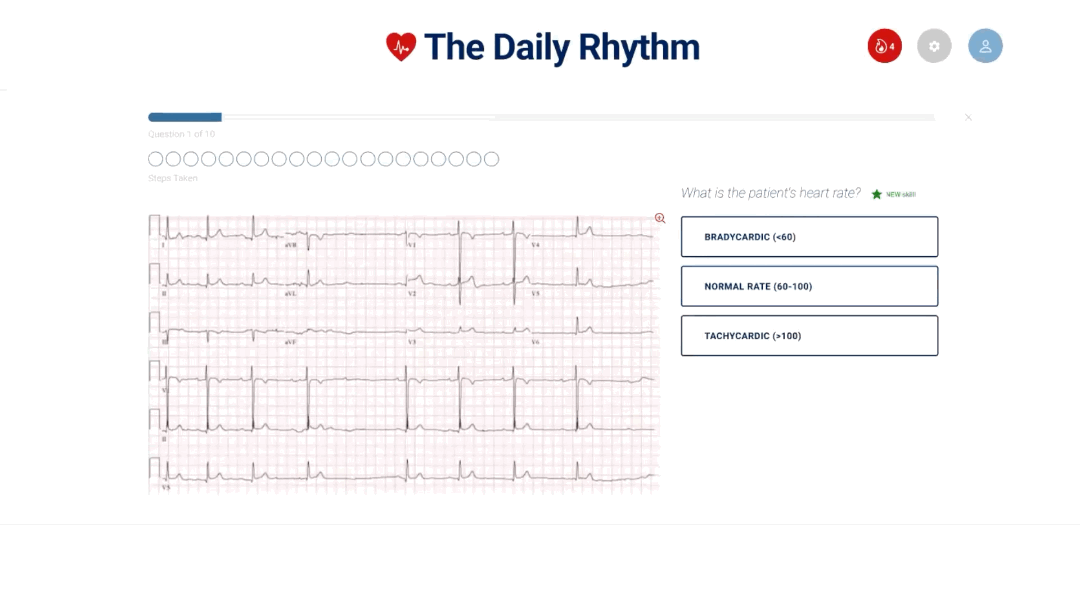The Daily Rhythm
A simplified, fun, free approach to learning EKG interpretation.
The Daily Rhythm is an innovative, web-based game developed in collaboration with Penn Medicine, designed to simplify and gamify the learning of EKG interpretation. Inspired by popular educational games like Wordle and Duolingo, it challenges users to read EKGs accurately using the decision-tree process in as few tries as possible. The effectiveness of The Daily Rhythm will be measured through user engagement rates and reduction in the number of attempts needed for correct interpretation. Feedback from medical students will provide qualitative insights into the game’s educational impact and user experience over each new 3 month cohort.
About the project
-

Getting Introduced
July 2023
Yoav and I got connected via the Code For Philly Slack Channel and began having calls to get me up to speed on the project / introduce additional team members on the clinical side.
-

Initial Research
Aug-Sept 2023
Amy joined and we began an audit of the existing prototype. We delegated some research tasks including a competitive analysis and how to incorporate UX best practices.
-

V1 Testing
Oct-Dec 2023
Using the existing prototype (V1), the fall cohort began testing. Bhavya and the other medical researchers conducted clinical testing, and we utilized Maze for user testing.
-

V2 Design Sprint
Dec 11-15, 2023
After analyzing the research from the fall cohort’s testing and interviews, Amy and I conducted a design sprint that would focus on resolving the most important issues students faced.
-

V2 Development
Dec-Jan 2024
With the updated Figma prototype in hand, Ivan was able to begin making updates to the web app he originally developed for future rounds of testing.
-

V2 Testing
Jan-Mar 2024
New cohorts in the Internal Medicine program start every 3 months, so the plan is to continue our pattern of testing and iterating on The Daily Rhythm
Project Goals
USER INTERFACE - Update existing UI to implement UX best practices and U Penn branding
CLARITY - Provide more visual cues for correct or incorrect answers
ENGAGEMENT - Incorporate gamified elements that make the learning experience more enjoyable for users.
Existing Prototype (V1)
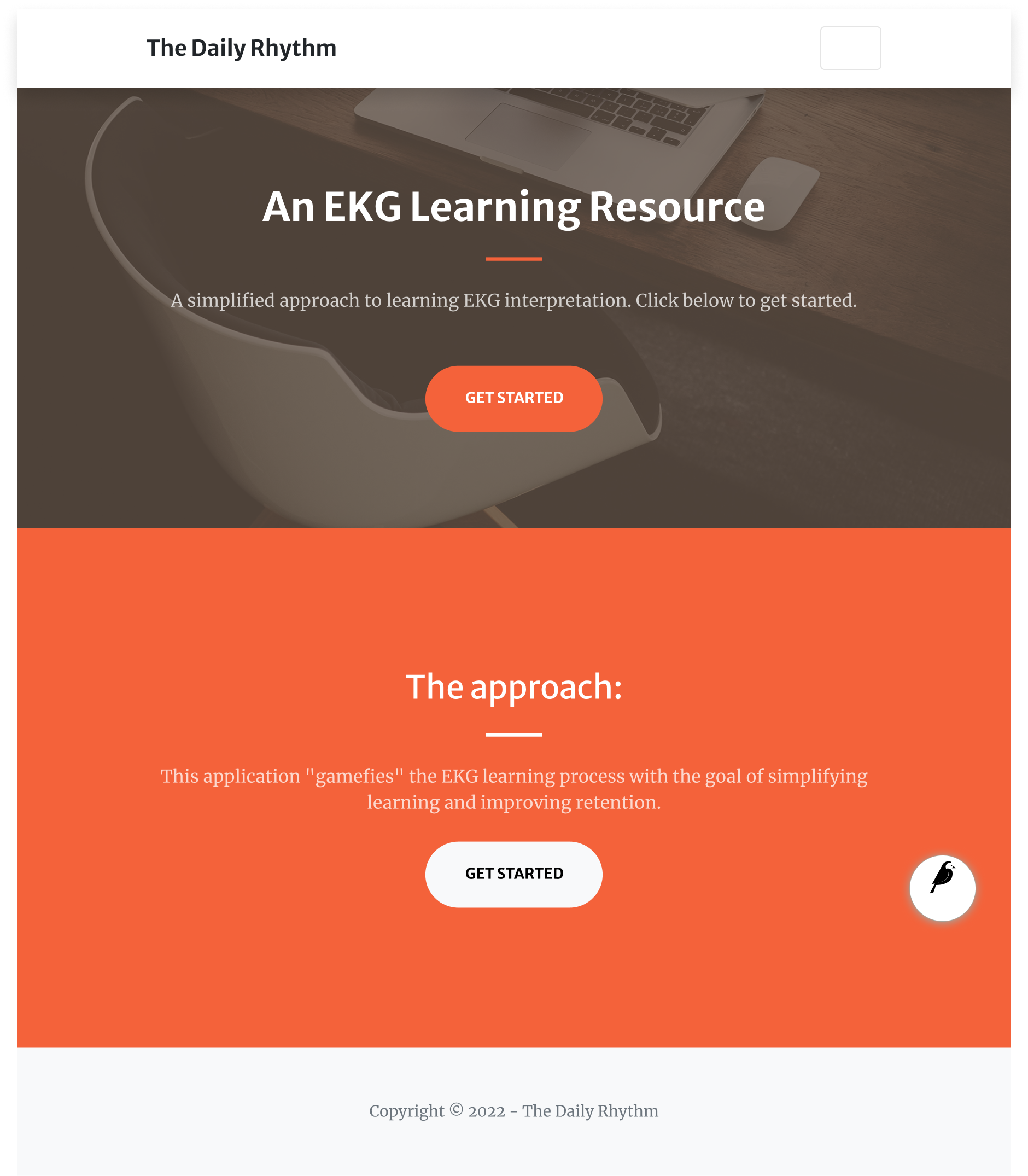


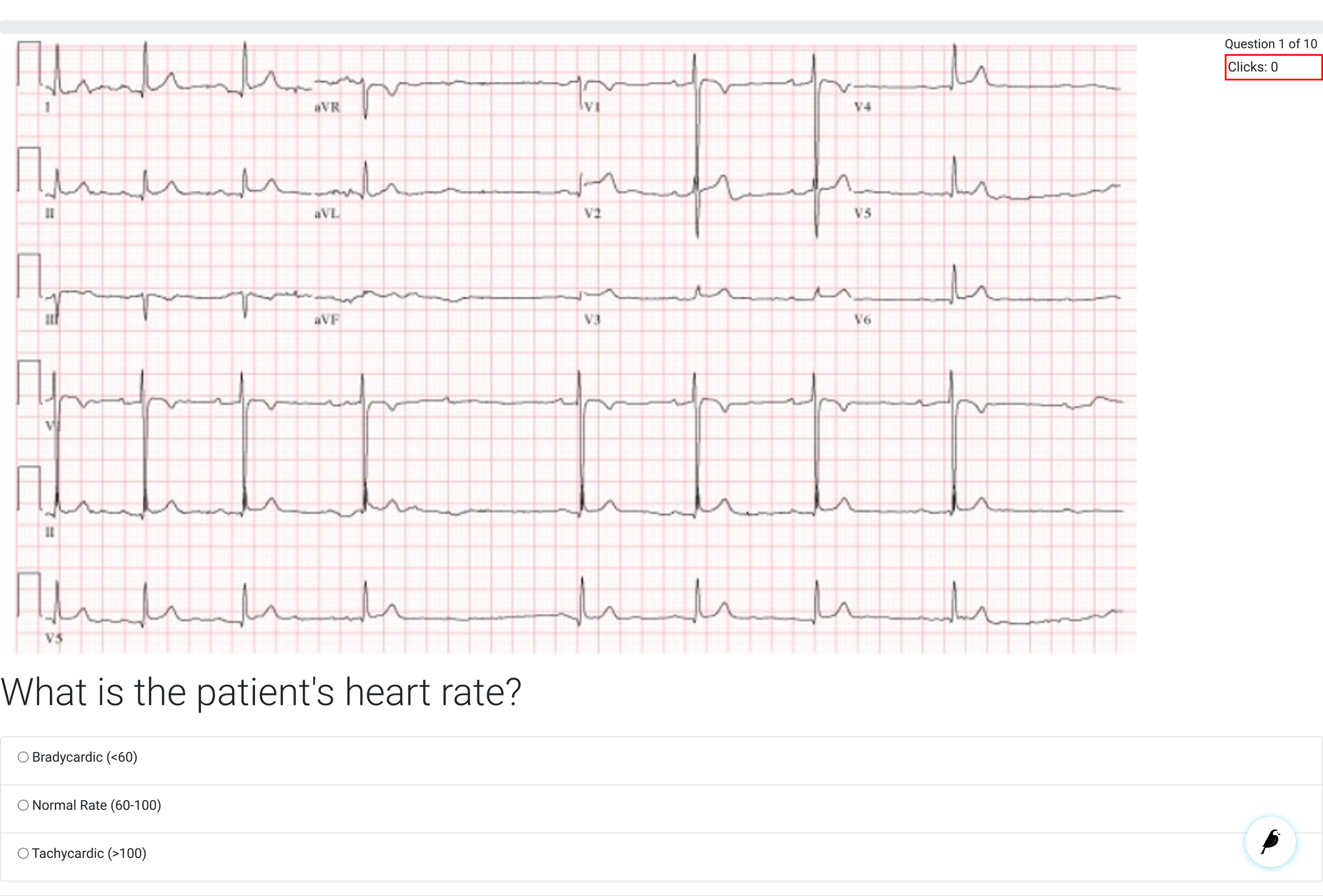
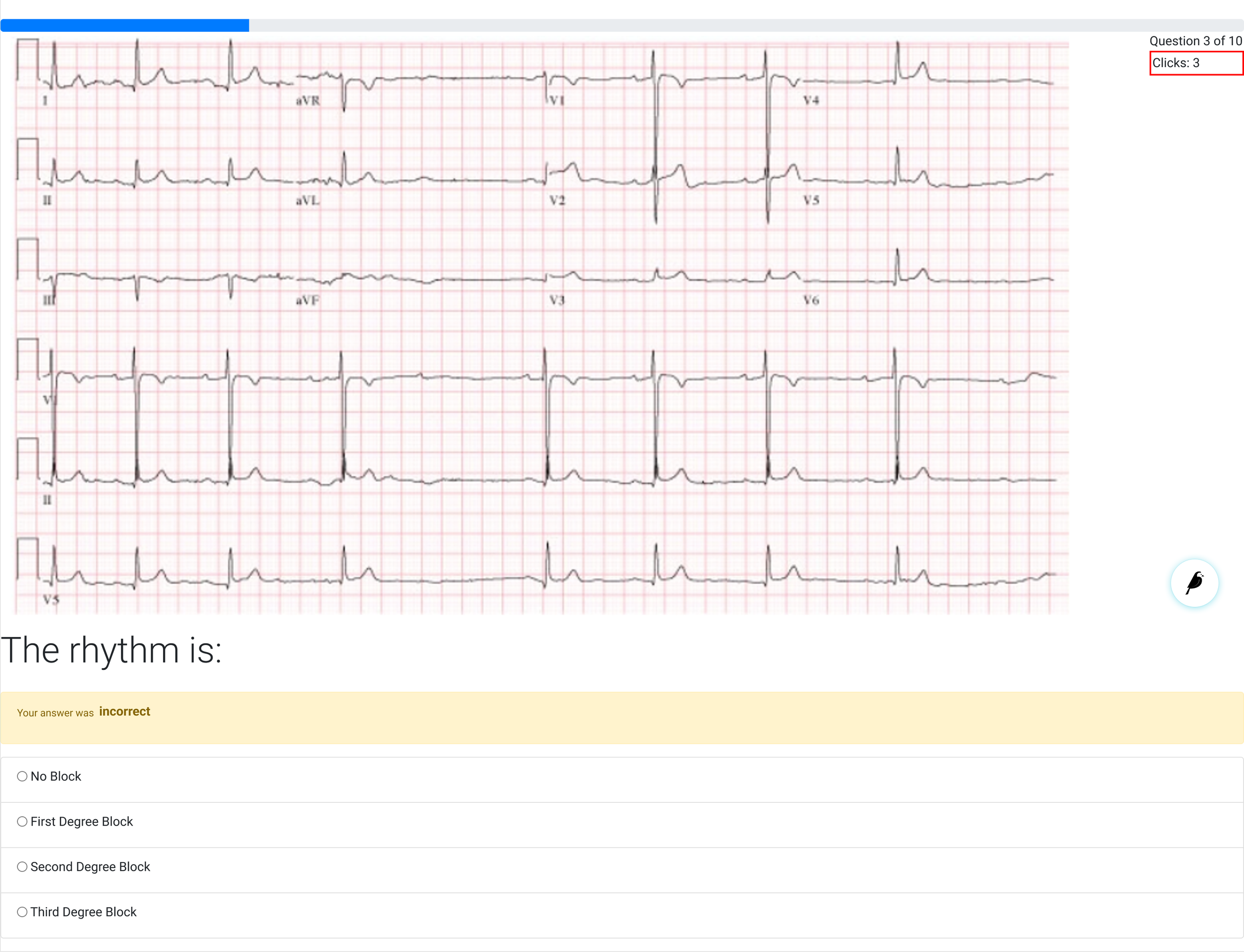
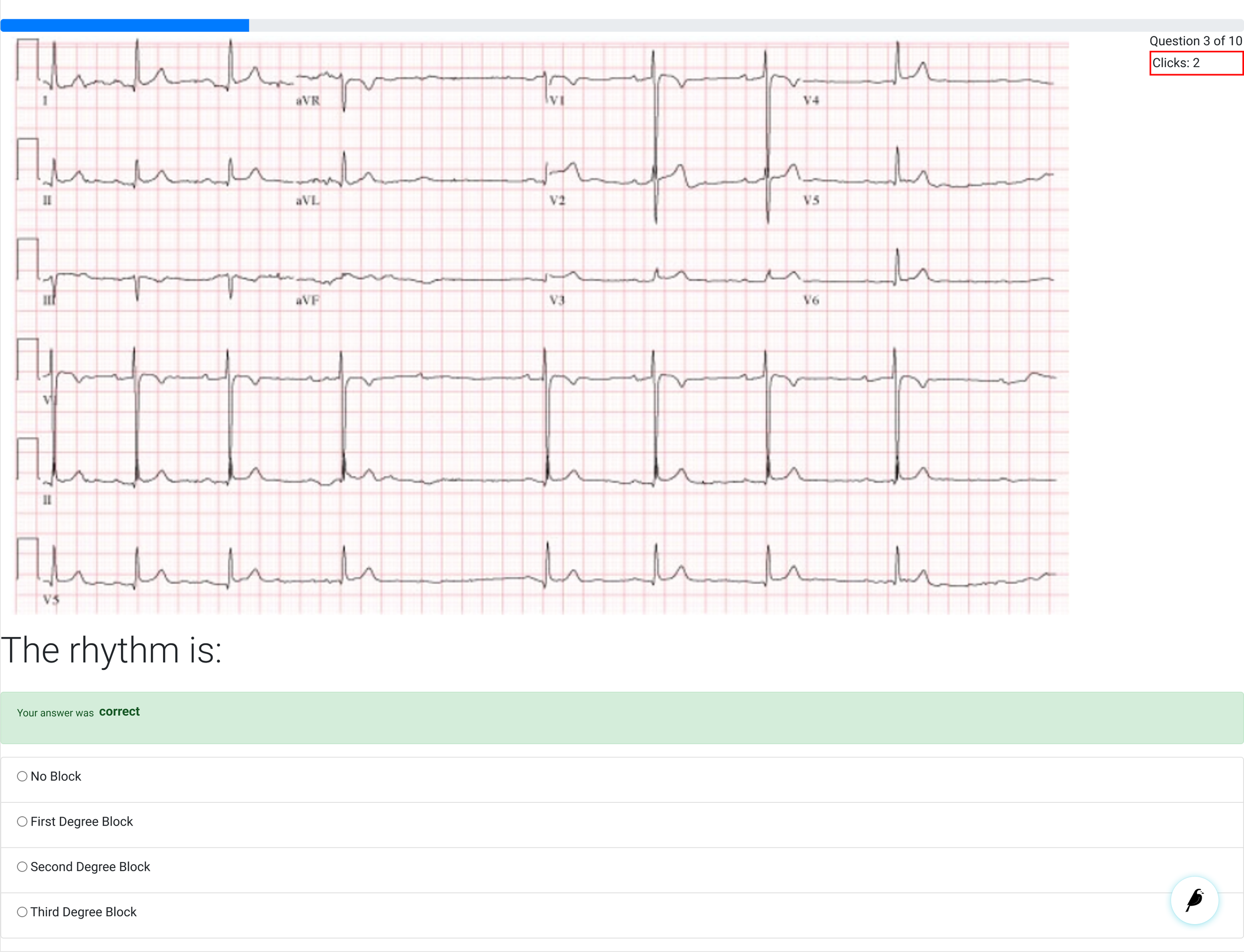
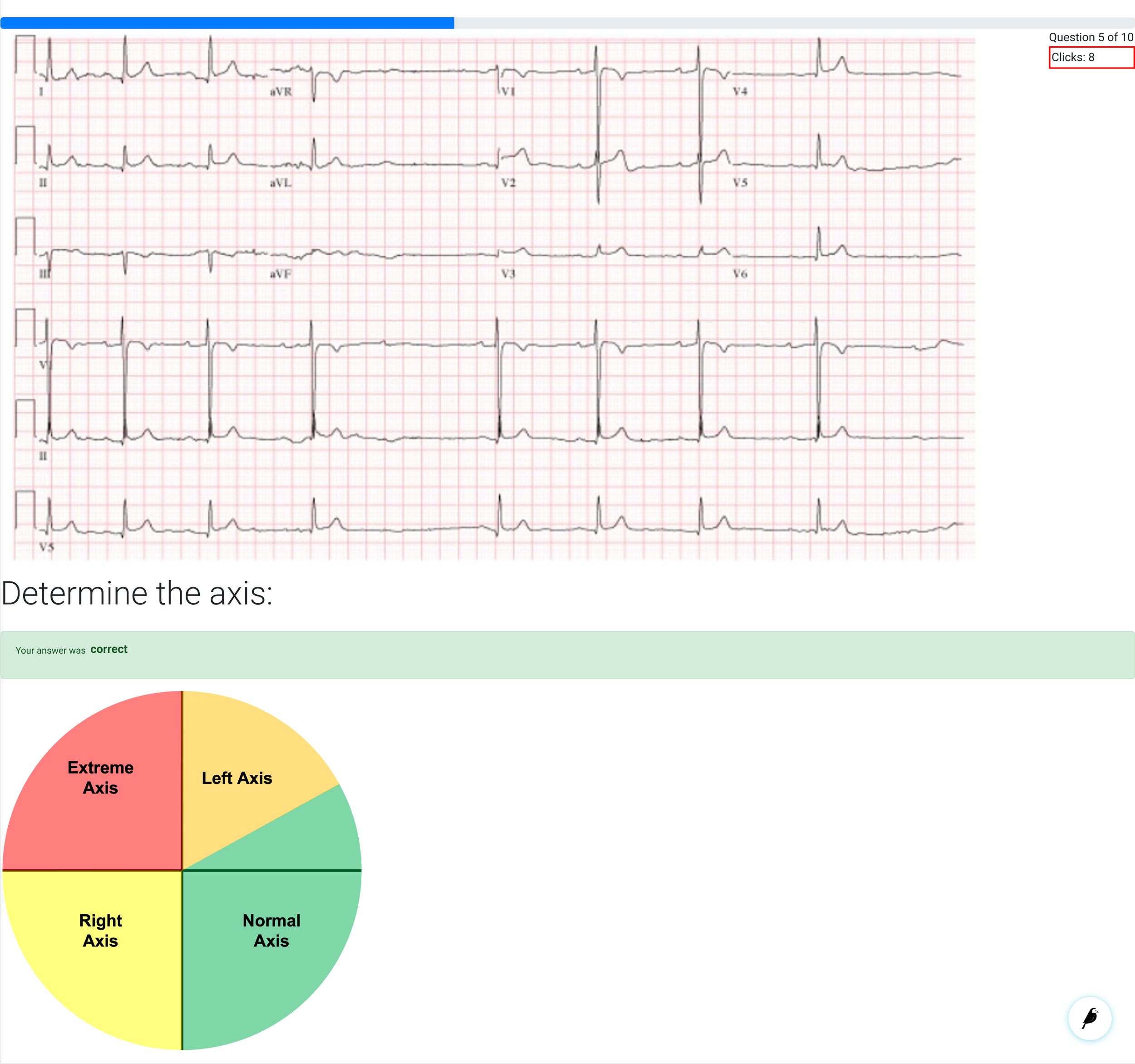
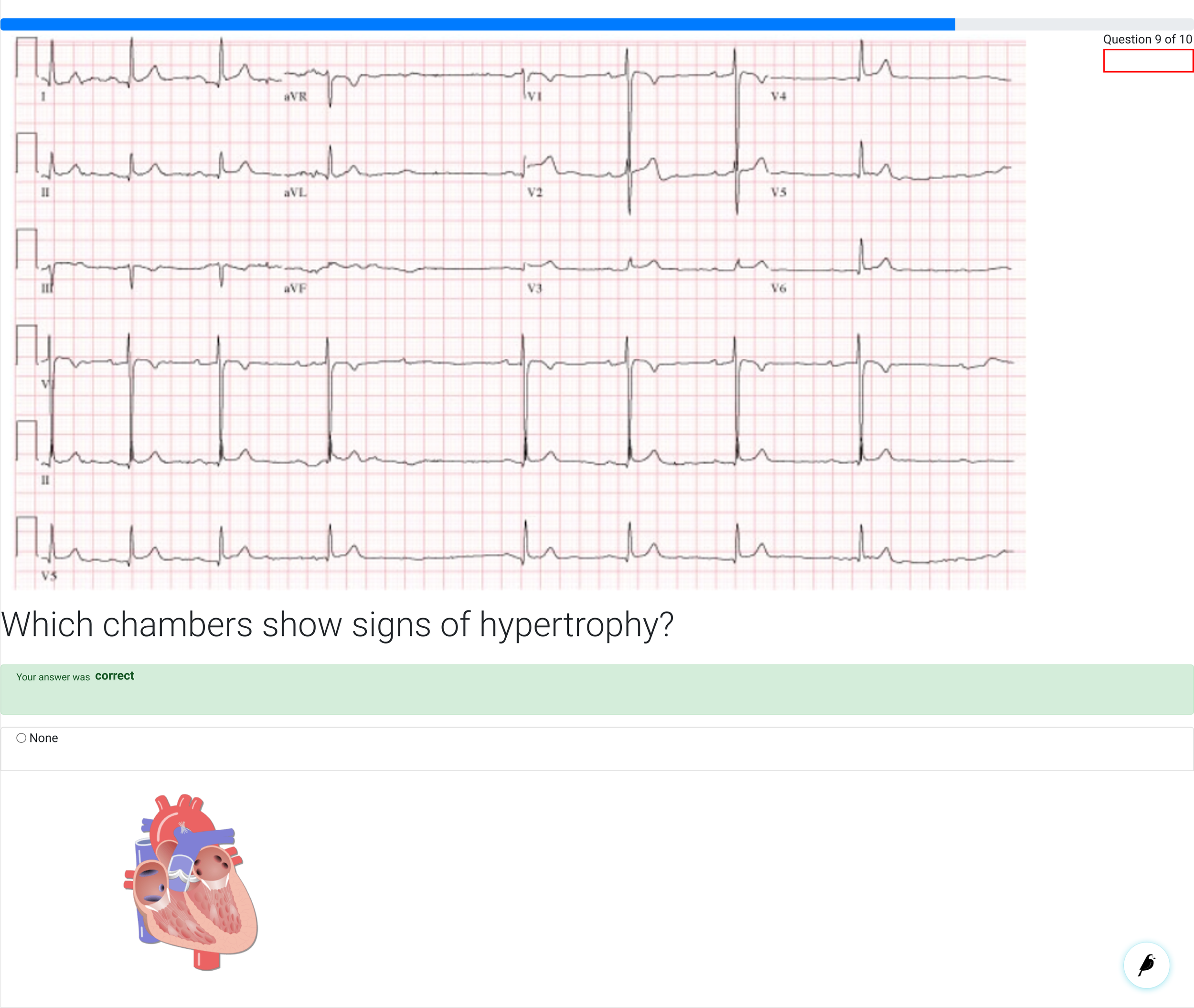
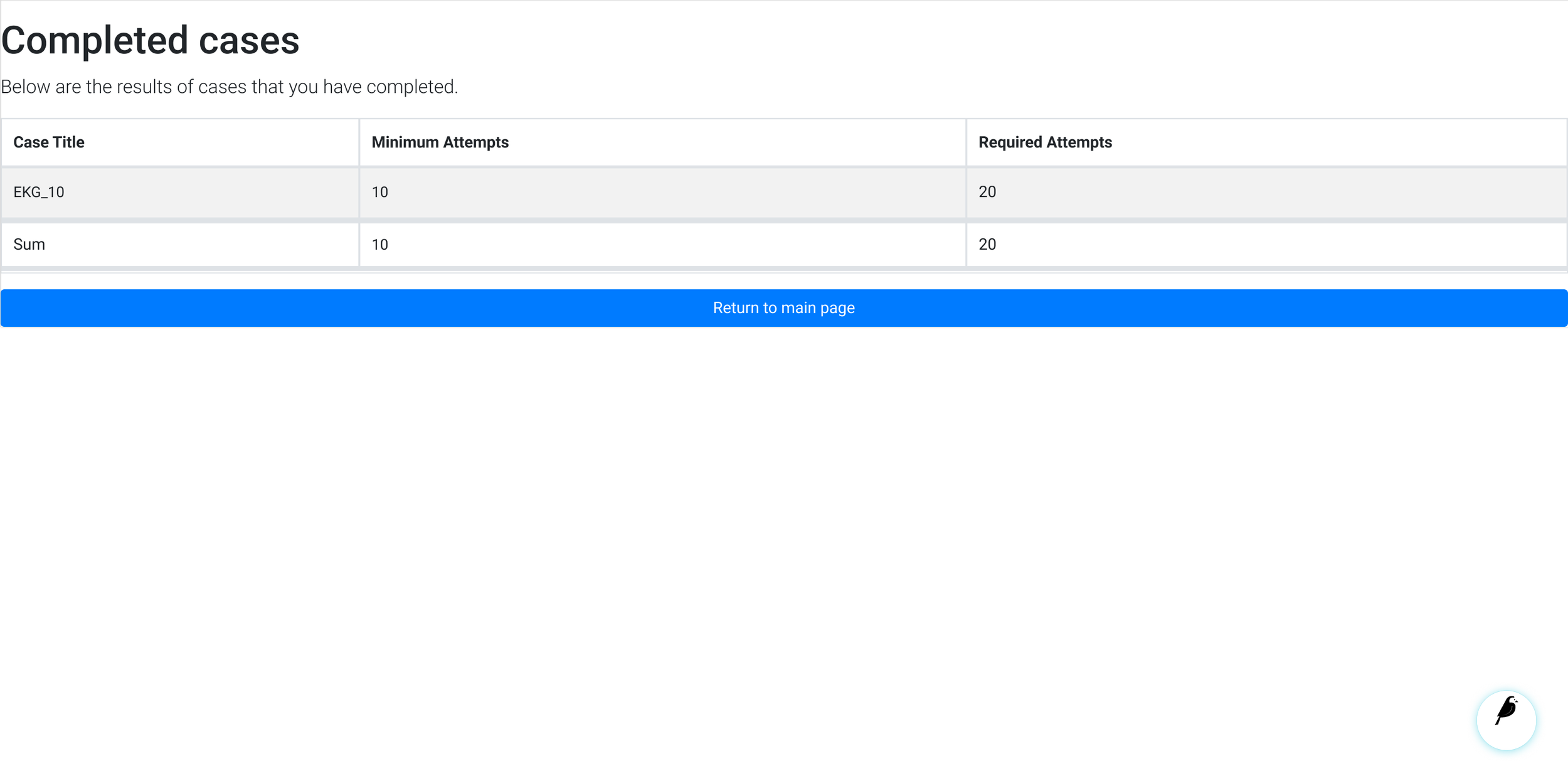
Competitive Analysis
After comparing 6 of the existing products on the market for students learning the skill of EKG interpretation, we gleaned some really beneficial insights and ideas. In addition to these 6 sites, we looked at indirect competition who have successfully gamified something educational such as Wordle, Duolingo, and Ahead.
User Research Analysis
Using the existing prototype (V1), the fall cohort began testing. Bhavya and the other medical researchers conducted clinical testing, and we utilized Maze for user testing. Amy and I synthesized the Maze data and interview transcripts. It was exciting to see that user testing was consistent with our original hypotheses for this round of iteration, and we got some additional ideas for our project backlog. We used Figjam to prioritize our sticky notes before beginning our December design sprint.

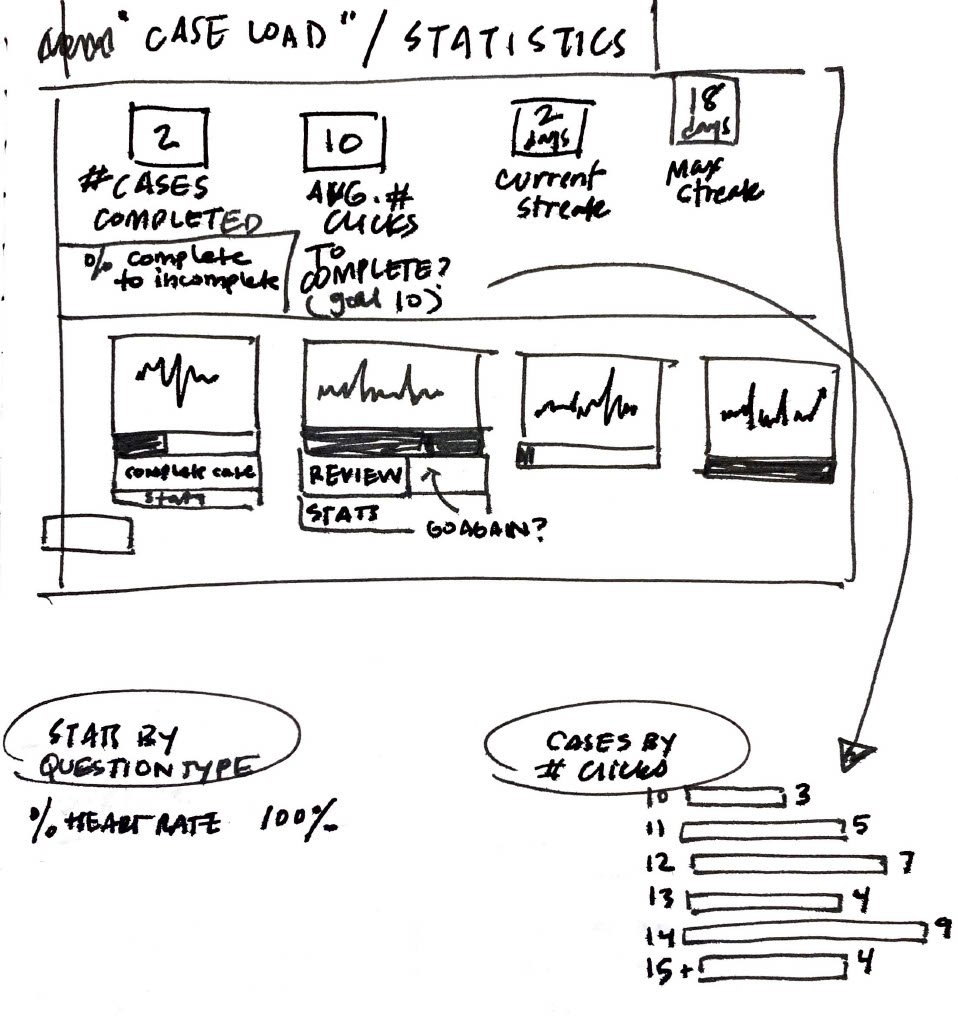
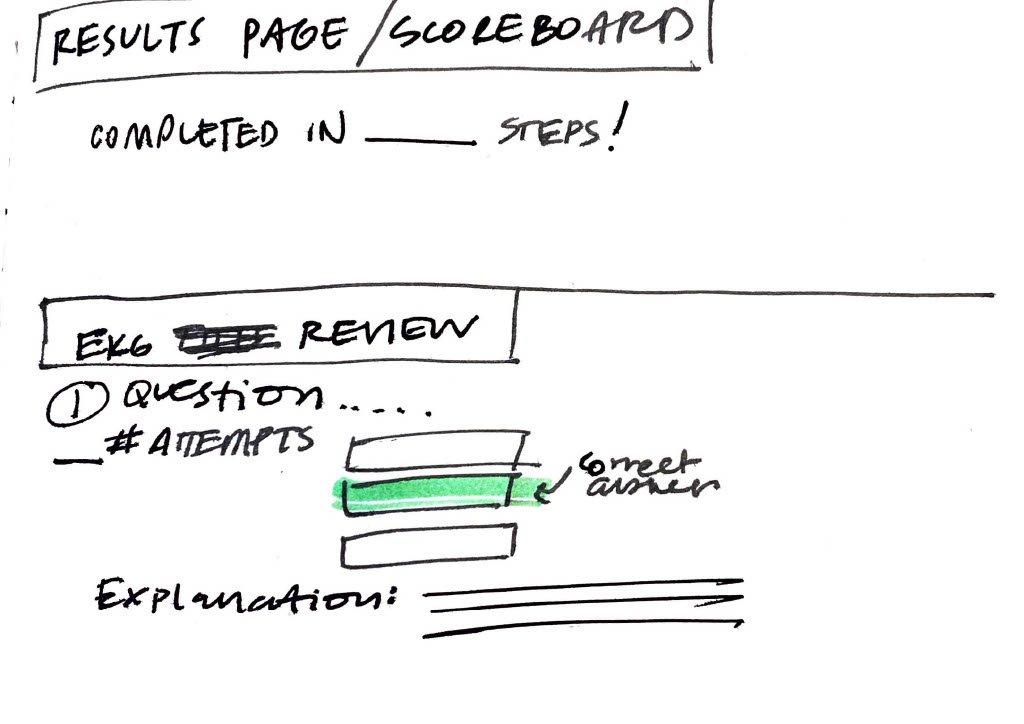

Updated UI
The updated UI incorporates the University of Pennsylvania’s existing branding. While there is some inconsistency within U Penn’s web UI, we did our best to keep The Daily Rhythm’s Design System consistent using components, variants, text, and copy styles in Figma.
To enhance user clarity as requested by our test participants, we improved the interface by introducing distinct button states, increasing padding for better readability, and adding progress bars for a more intuitive user experience.
Future Iterations
In order to implement the updates by start of the next cohort, we have a lengthy backlog of features for upcoming iterations of the app including:
Rankings / Leaderboard - Incorporating a competitive element can significantly enhance the learning experience. Our vision extends beyond individual users competing against their peers; we aim to foster a broader educational spirit where schools, cities, and even countries can engage in friendly competition with one another.
Additional animations / interactions - while we have begun ideating how to incorporate fun into the game, we would like future versions to include more illustrated / heart themed characters with cardiology-filled language to interact with learners as they play. While these types of animations aren’t necessary for learning, they make the experience more enjoyable which in turn means users are more likely to keep playing and learning for longer periods of time.
Dedicated Mobile App - currently, Penn Med students in the Internal Medicine clerkship only have access to a web app. As time goes on and we begin testing with more learners outside this program, a dedicated mobile app would be preferred by students learning on the go. This is an opportunity for The Daily Rhythm to stand out amongst the competition.
Hints and levels of difficulty - based on the clinical research the current game method would not be an effective learning tool for students at the preclinical level. Though as we expand outside the Internal Medicine clerkship users, additional methods of learning via hints and levels of difficulty would be interesting to test (also see “learn mode”).
Learn mode - in addition to the current “decision tree” game play, it would be helpful to include an educational mode where students can dig into the “why” behind their cases, study in a flashcard or jeopardy style, and have a library of terms and resources for those who are just starting to interpret EKGs
Meet the Team
